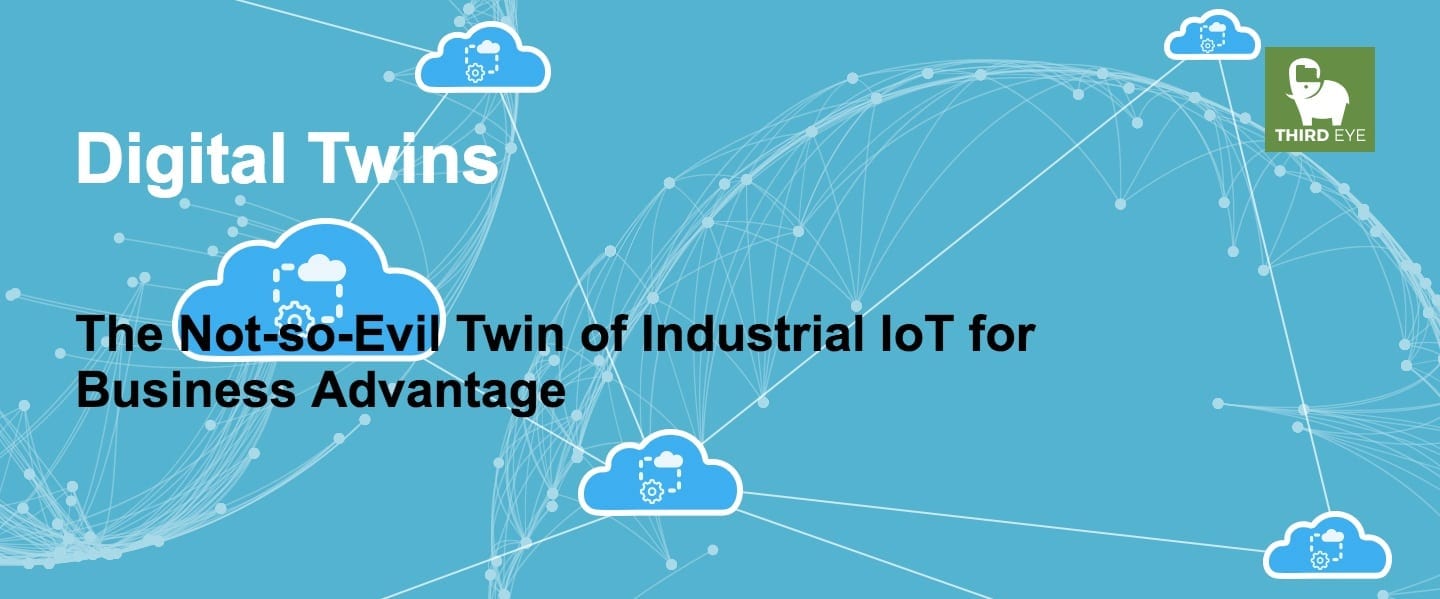Recently Gartner announced that one of the key tech trends of next year will be the rise of Digital Twins. But then what is a Digital Twin? And how does it relate to enterprises?
What Is a Digital Twin?
Most organizations are currently engulfed in a tidal wave of data, especially those who are dealing with the Internet of Things (IoT) data for their analytical solutions. Digital Twins are a way for gleaning more value out of Big Data for business goals and objectives.
A Digital Twin is a virtual representation of a real-world object, based on live data from that object. Imagine, for example, a vehicle filled with IoT devices gathering every type of data imaginable, from engine temperature to the pressure in each individual tire.
By combining all of that data, it is possible to create a detailed simulation of the vehicle: a Digital Twin. The Digital Twin can easily be analyzed so that, for example, the operator of a fleet of vehicles can predict when an individual vehicle is going to need to stop for servicing.
Even better, Digital Twins can be used to test scenarios. If a factory wants to increase output on an assembly line, for example, it can use the Digital Twin to run a simulation to see how much things can be sped up before problems begin to emerge.
The era of Big Data raises the question: What do we do with all of this information? Digital Twins are a practical method of turning huge volumes of data into something that can be easily understood, and used to drive vital business decisions.
Practical Applications of Digital Twins
Where there’s a large quantity of data, there’s an opportunity to create a Digital Twin. That applies to machinery, networks — even people. Here are some current examples of how enterprises are making use of Digital Twins:
1. Heavy Machinery
Digital Twins have helped GE to increase the efficiency of wind farms by as much as 20 percent. Digital Twins help to plan the layout of wind farms to maximize the return on each turbine. They also help to predict when an individual turbine is going to need repair, which can then be scheduled for an optimal moment. Stopping and restarting a turbine is expensive and can take weeks, so an unexpected breakdown can have a catastrophic effect on productivity.
2. Aviation
The tolerance for failure in aviation is zero — even a minor fault could result in death and destruction. It’s why the aviation field is a pioneer in IoT, with thousands of monitoring devices on each aircraft. This can be used to build extremely sophisticated Digital Twins, to predict when failure may occur. They can also be used to test the effect of upgrades and new parts, something that the U.S. Air Force now does before making any modifications to their planes.
3. Health Care
Like aviation, there are no second chances in health care. If the surgeon makes a mistake during your complex heart surgery, you’ll die. So, what if the surgeon could practice on a virtual version of your heart before making an incision? This is an emerging technology, but the idea is to build a digital twin of the patient’s body using data from scans, and then allow the surgeon to “practice” on it using virtual reality.
4. Customer Journeys
Instead of A/B testing to see how people respond to your new digital service, what if you could create virtual customers and see how they respond? It is possible with enough customer data on hand, and some financial companies are using Digital Twins to step through customer journeys on new products, such as pensions and long-term savings plans.
Platforms such as IBM’s Watson make it possible for existing businesses to make use of Digital Twins. This could be the first step towards really harnessing the power of Big Data to drive enterprise.
This, ultimately, is the purpose of Digital Twinning: to turn data into insights, helping businesses become more efficient, to build better products and understand themselves better than ever before. The first step, of course, is to be data-ready and start capturing the required data, by building sophisticated apps and implementing IoT infrastructures.
—————————————————————————————————
Eyera – Out-of-the-Box Solution for IoT
ThirdEye has released Eyera which is an out-of-the-box solution for Internet of Things applications. It is customizable to any enterprise’s use cases, scales as per its business needs and ensures the lowest TCO for developing, operating and maintaining the IoT applications.
Eyera embodies all functionalities of a typical IoT application. Enterprises can build their IoT solutions by leveraging Eyera’s out-of-the-box modules and customizing the rest as per their specific use cases & data sets.
ThirdEye is offering a full featured 7-day free trial of Eyera.
Sign up here.







